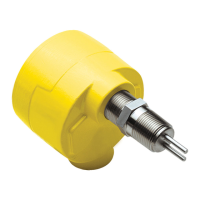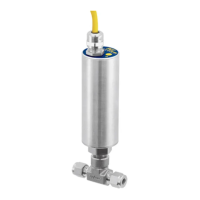This page is subject to proprietary rights statement on last page
FLT93 Installation, Operation and
Troubleshooting Guide
Pre-Installation
A. To get the best results from the instrument, the instrument should be mounted 20 pipe diameters downstream from any valve,
pipe elbow, or other flow disturbance and 10 pipe diameters upstream from any disturbances.
The instrument tag shows the model number, tag number (if noted on the customer’s order), serial number along with other
important safety information. Compare this information with the appropriate pipe installation drawings to verify the instrument
is the correct configuration.
B. Verify the serial numbers on the enclosure(s), flow element and electronics match. The instrument may not work if the
serial numbers do not match. (The remote option has a remote transmitter enclosure (FT) and a local flow element enclo-
sure (FE). The integral option has one enclosure.)
Flow Element Serial Number
Also Showing Flow Arrow.
(Located near the FE enclosure.
It is also on the enclosure tag.)
Electronics Serial Number
(It is also on the transmitter’s (FT) enclosure tag.)
C. Recommended installation/troubleshooting tools are an open-ended wrench to fit the NPT connection, an open-ended wrench
to fit the flanged fitting nuts and bolts, a small flat blade screw driver for manipulating potentiometers, both a medium flat
blade screwdriver and a medium phillips head screwdriver for tightening connections, 3 mm allen wrench for CENELEC
approved instruments, a measuring tape for proper flow element placement, and a DVM for Ohm/Voltage measurements.
Note:
If the instrument is a remote configuration, the serial number on the enclosure tags must match.
The recommended tag number on the local enclosure will have an FE in the tag number. The recommended tag number on the
remote enclosure will have an FT in the tag number. (Tags are specified by the customer, “FE/FT” is a recommended naming
convention.)
Tag Location - Between Conduit Ports
On Integral or Local Enclosure
Tag Location - Top Side of
Remote Enclosure Option


